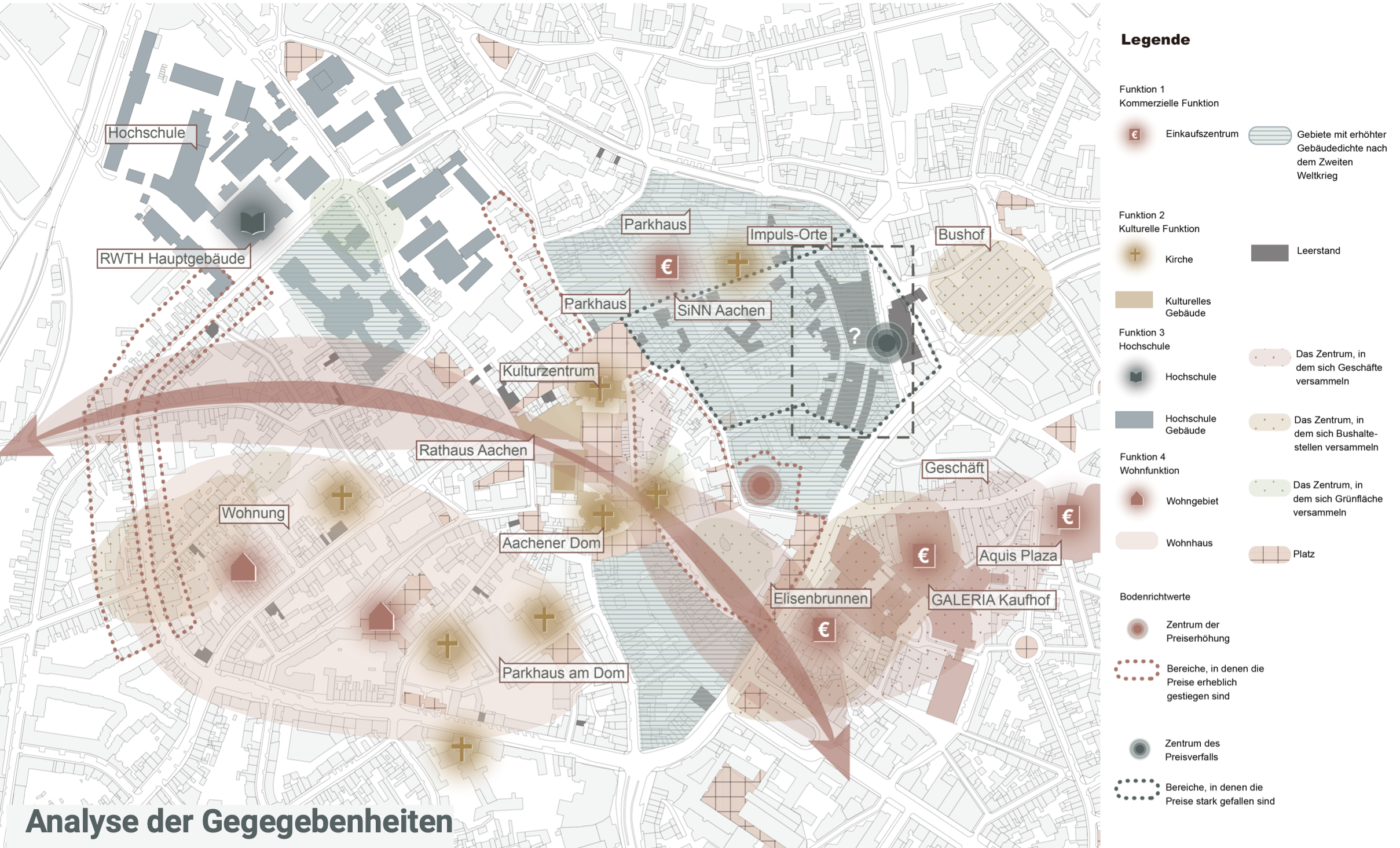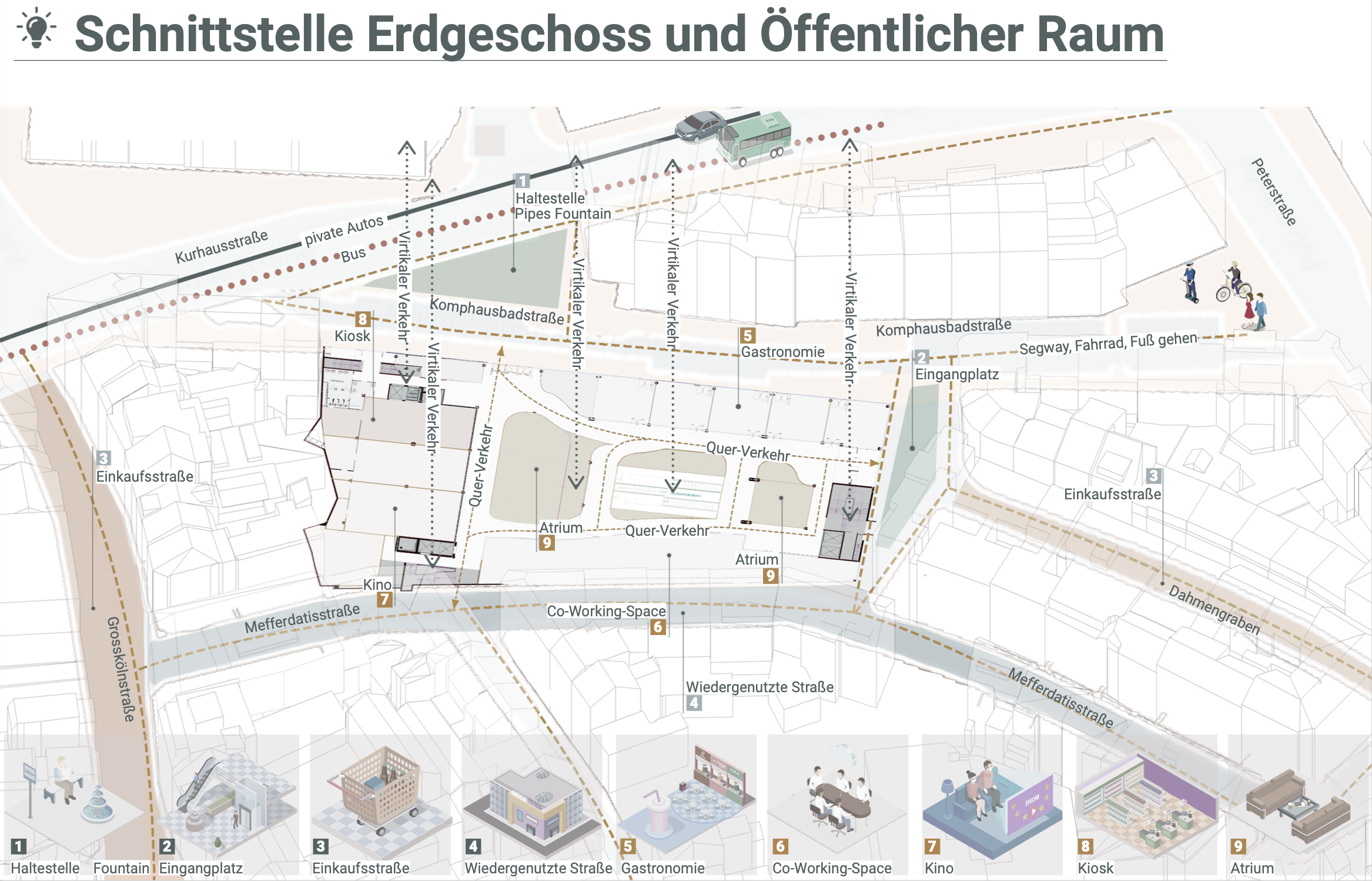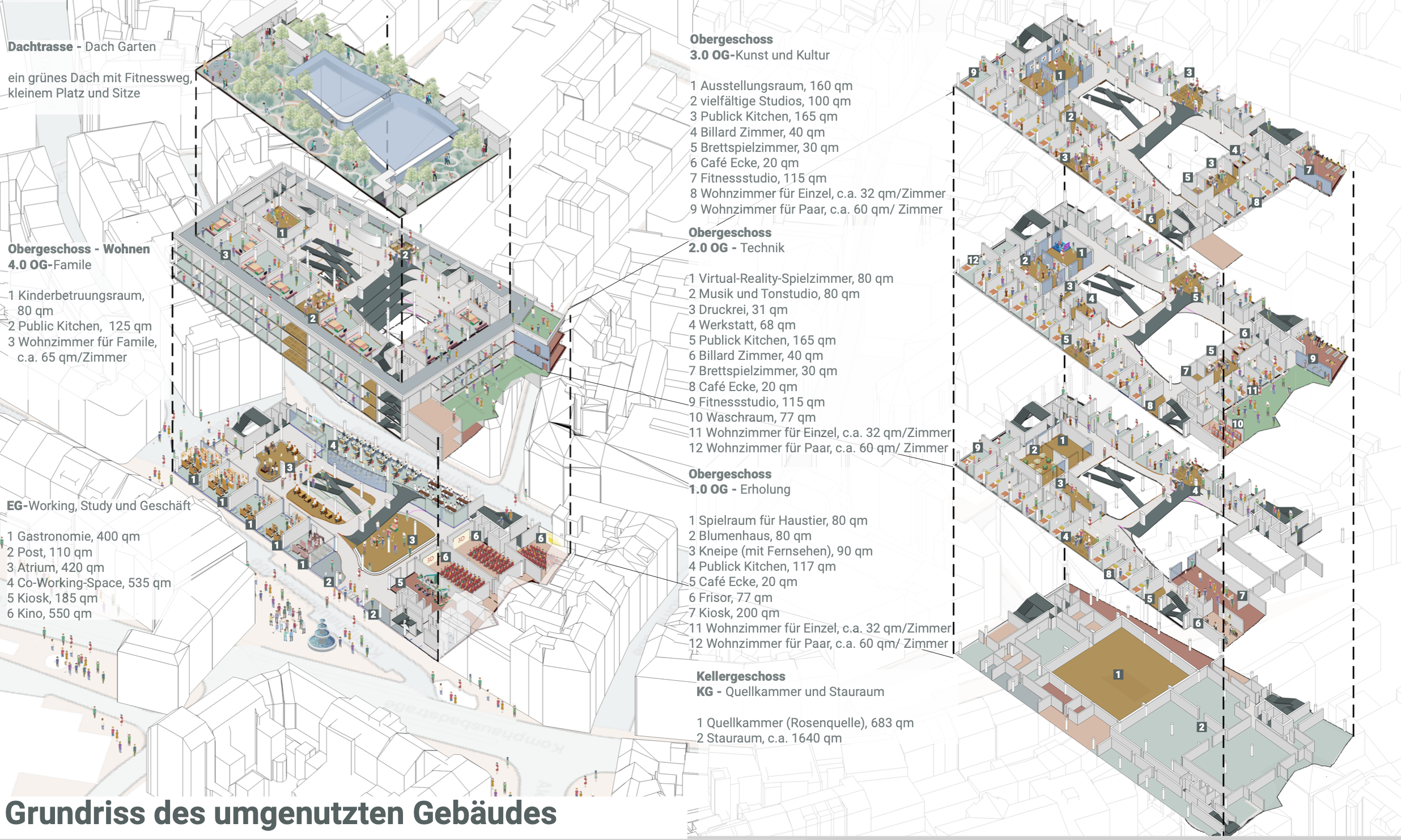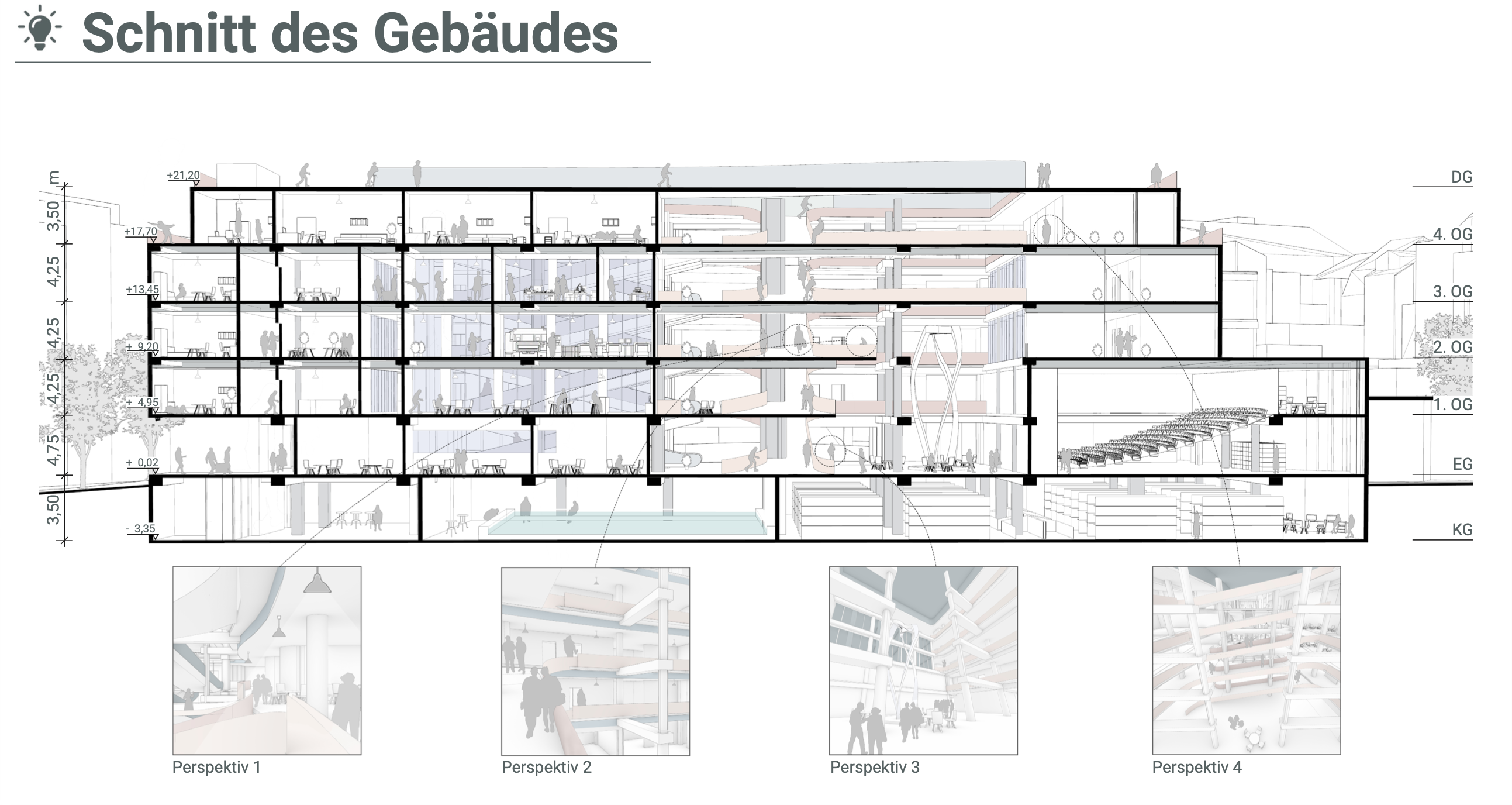#Design#
The development of the city center has always been the focus of urban planning. In inner-city development, the urban mix and the intensive development model are always one of the urban planning principles in many cities around the world.[1] At the same time, with the development of society, the digital transformation has also become a focus of urban planning research.[2] This essay mainly presents the two inner-city development trends, urban mix and digitization, as well as their inherent development logic. And we take the city of Aachen as an example to illustrate the performance of these two trends in inner city development.
Most European cities are often based on the foundations of antiquity. Therefore, the spatial structure of the city is more complex and changeable than the newly built cities in modern times (such as Chinese cities). With the exception of a few large cities, it is difficult to achieve uniform large-scale development of residential areas in European cities. This has led to the formation of small blocks and dense street networks in the cities of Europe. Commercial development can be done on the street side of the block. Therefore, conditions for mixing urban functions are created. On the other hand, due to social development, compact and intensive development models are becoming more and more popular. This development model means high efficiency and economy to meet the diverse needs of more citizens. Many problems such as energy saving, mobility and accessibility of various functions can be solved. All of this has prompted the urban planning industry to pay more and more attention to the urban mix.
Housing is still the city's most important issue, and other activities in the city will revolve around housing. Providing services for residential functions is also one of the main purposes of the urban mix. The types of human activities are more colorful and diverse, which also places higher demands on the urban mix. From this perspective, the urban mix is more of a framework. And this framework is constantly being enriched and perfected. In recent years, many concepts have been integrated into this framework, such as community sustainability, high density development and TOD. At the same time, due to technological progress, the topic of digital transformation is also in the foreground, and the related theories and methods are constantly being improved. The concept of the smart city is appearing more and more frequently in urban planning research and in current projects. With the help of technical equipment, a large amount of city-related data can now be collected, and planners can better understand the city's development direction and citizens' needs. In addition, the Internet of Things technology brings more opportunities to citizens' lives. People can interact more interestingly with the urban environment.
Aachen is a city known for its ancient culture. There are many ancient ruins in the city center of Aachen, so that the development of the city center is closely linked to tourism. On the other hand, the university culture of Aachen also has a major influence on the development of the city. These different functional purposes create conditions for the urban mix, which is why the urban mix can also serve as a future trend for the city of Aachen.
We can summarize the functions of Aachen city center into four parts: tourism and service sector, residence, business activities and university. The rich urban structure of Aachen's inner city from the Middle Ages offers a rich mixture of these four functions. For example, on the ground floor is the service industry, on the other floors of the apartment, and the combination of tourism and university, guided by the university culture.

Analysis

Framework

Format

Layout

Scenarios
Collaborators: Bing Wang.
For the full program see here